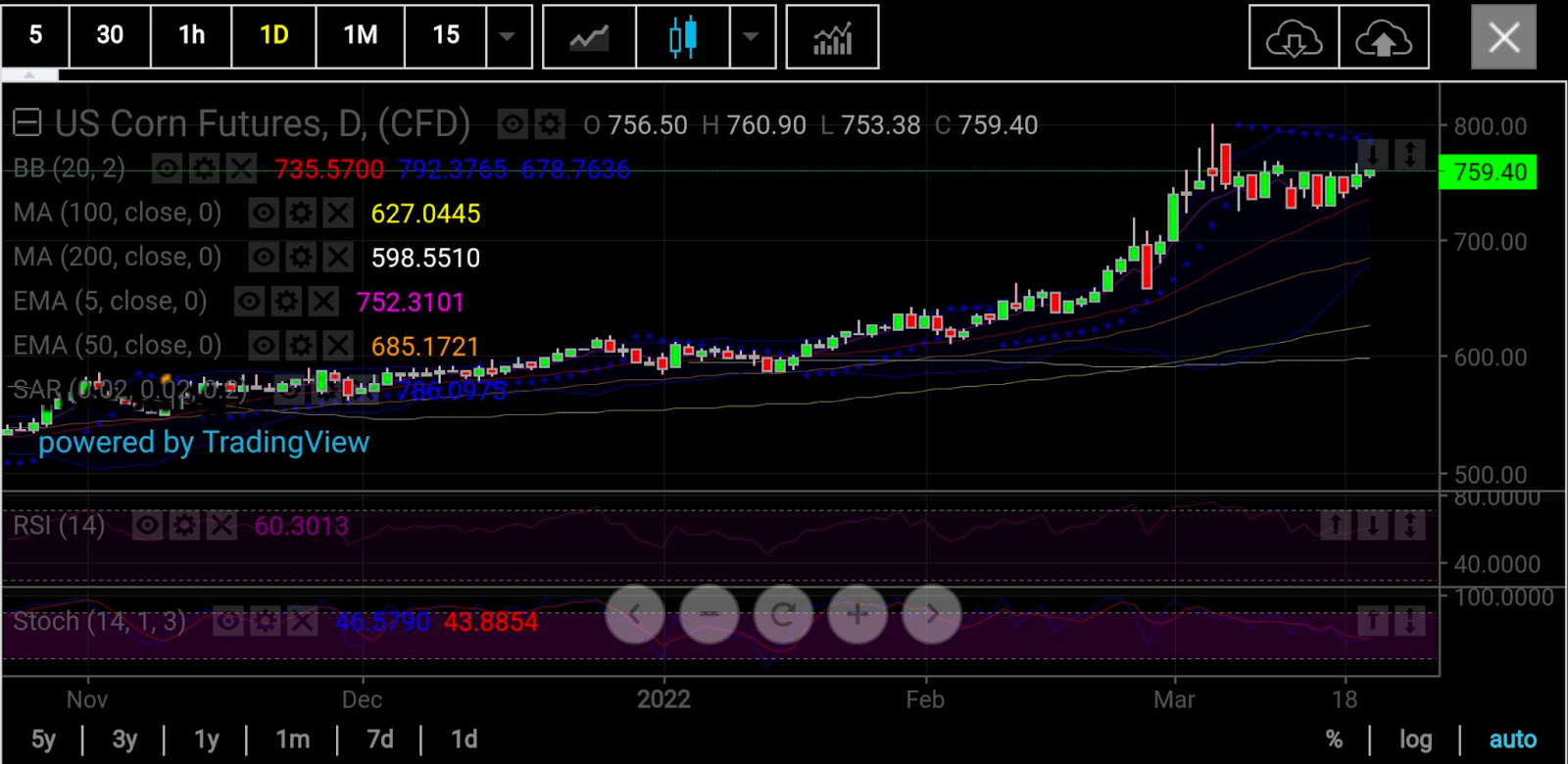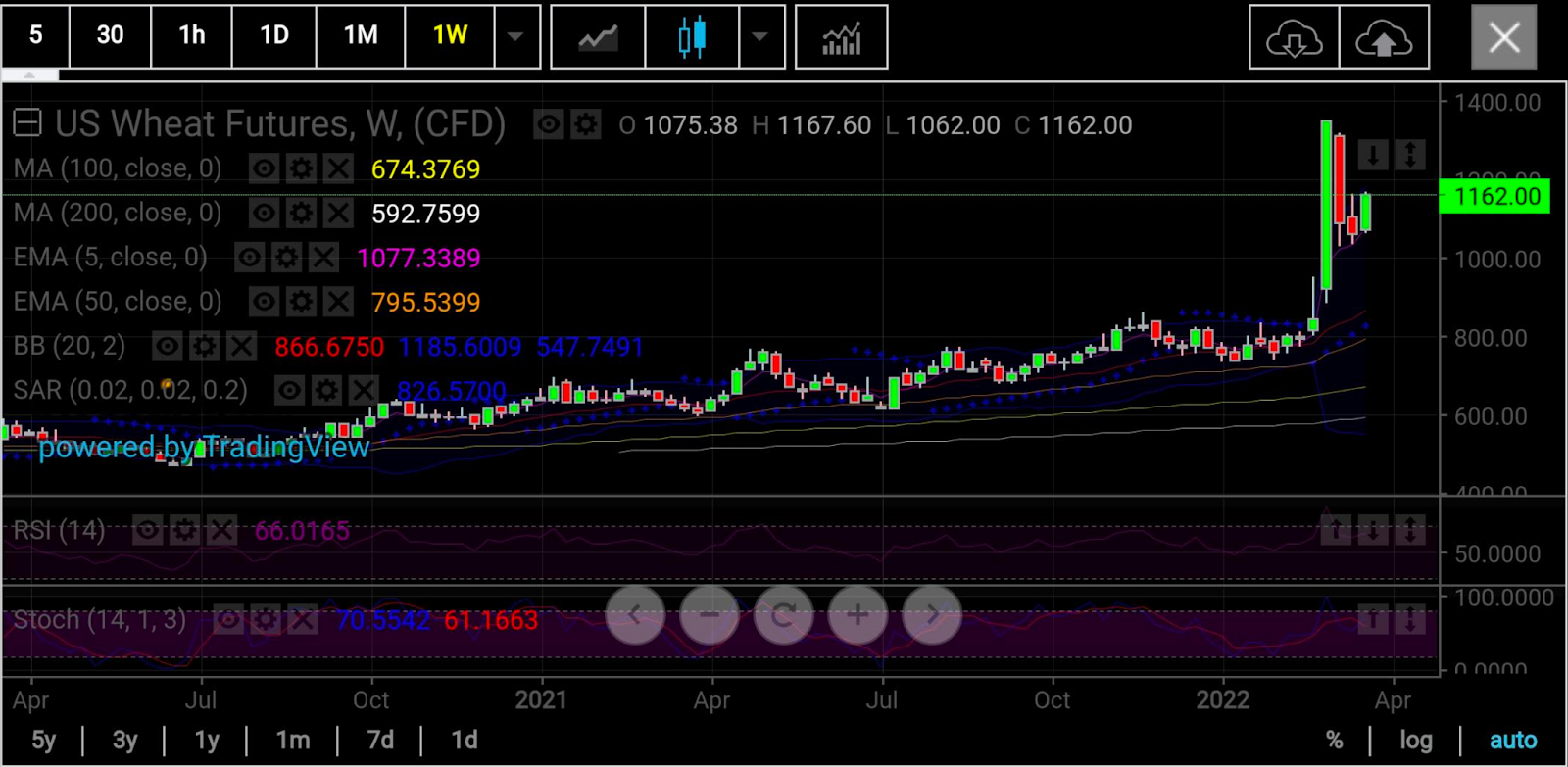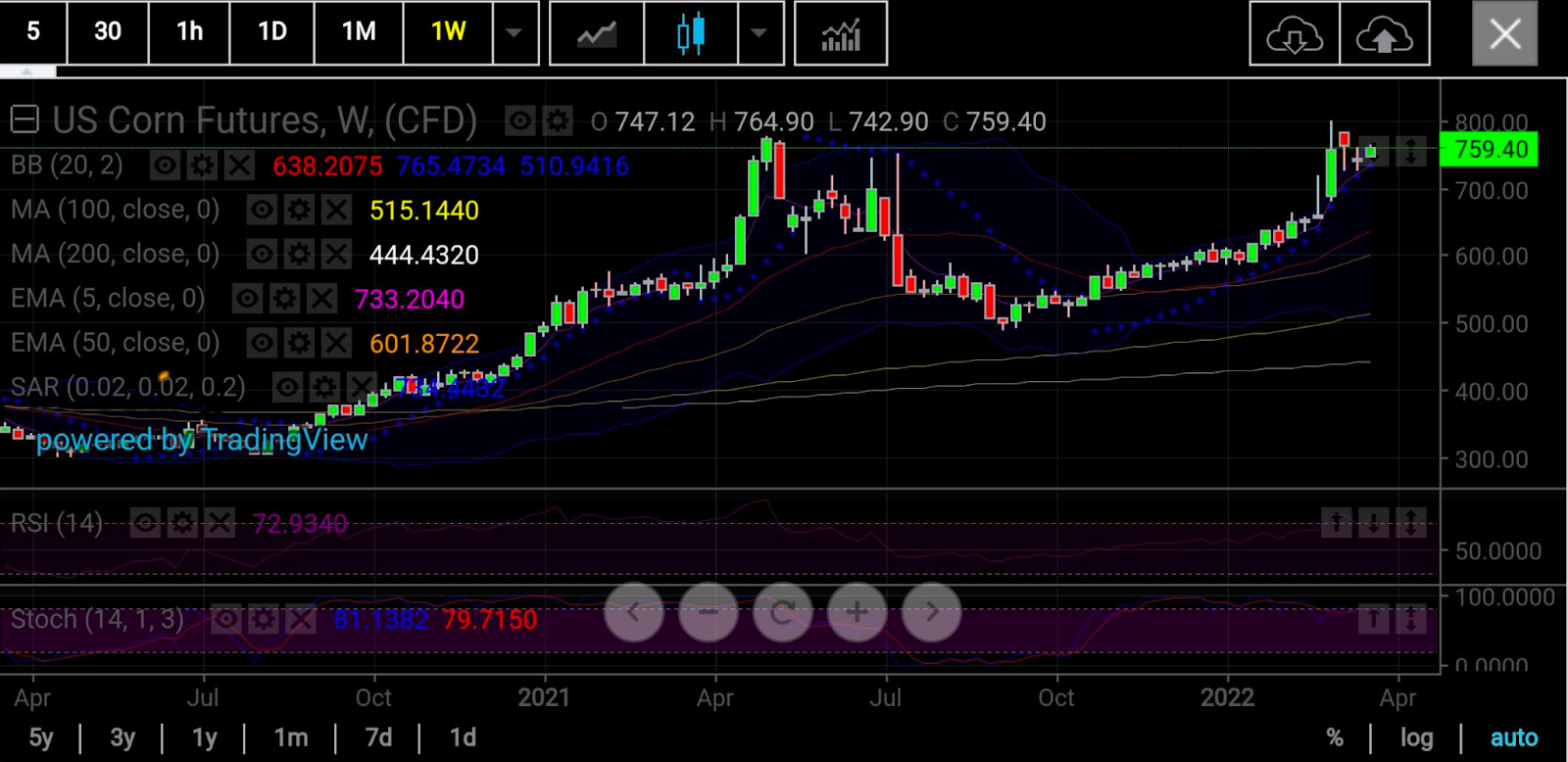Two weeks after some of the wildest swings in wheat and corn, both markets are trading sideways amid a pause in the Russian rollercoaster ride for grains. But with prices remaining elevated from the lows prior to the Ukraine invasion, the question is - where could they be headed in the near term?
In Tuesday’s Asian trading window, front-month wheat on the Chicago Board of Trade was up 28.10 cents, or 2.5%, at $11.46 per bushel.

Charts courtesy of skcharting.com
That was almost 20% lower from the Mar. 4 record high of $14.25 for benchmark wheat on the CBOT. Yet, when compared with the $8.03 low from Feb. 22—which was two days prior to the invasion—the front-month contract was still 43% higher.
In the case of corn, CBOT’s front-month was at up 2.70 cents, or 0.4%, at $7.60 per bushel. That was 5% lower than the Mar. 4 high of $8 for corn. But when one looks at the $6.58 low of Feb. 22, it was still 16% higher.
Jack Scoville, VP and chief crop analyst at Chicago’s Price Futures Group, said wheat and corn prices calmed last week on optimism that peace talks might yield an end soon to the Russia/Ukraine war. Signs that those hopes were overrated have bumped the markets off their lows, though not by much.
"Trends are sideways on the daily charts," said Scoville, referring to wheat.
He added:
"Ports are closed in Ukraine, and Russian shippers and exporters are not offering any wheat, partly due to sanctions but mostly due to the war and the chance they could lose ships if they do so.
“The US is revoking Most Favored Nation trading status for Russia, so higher wheat prices seem likely down the road. Ukrainians have no interest in living under Russian occupation so the war could be deadly and very costly to both sides. Russia and Ukraine are both major wheat exporters."
Russia and Ukraine supply nearly 30% of the world's wheat from vast and fertile farmlands in the Black Sea region known as the "breadbasket of the world." Since last week, however, Ukraine banned the export of wheat, oats and other staples to avoid a "humanitarian crisis" at home, according to a government statement.

With corn, Scoville said the potential loss of Ukraine exports makes corn supply even tighter and might be enough to keep corn prices from trending lower.
"Ukraine might not plant much, or any, corn this summer. Russia is also a corn exporter and no product is moving from either country at this time. Crop losses in South America are noted as well as the summer corn crop there has been hurt by drought, although some rains are reported now."
Scoville said corn has been slower to react than wheat to upward price pressure because the bigger crop for the grain was the one in the winter, coming from Brazil and expected to be large in size.
"However, not all of the winter crop has been planted and the bad-weather window for corn planting is passing by. China’s COVID outbreak that closed some cities and ports will also hurt imports as people can’t make or spend money and there will be fewer places to unload cargoes."
So, what’s the technical outlook for wheat and corn?
According to Sunil Kumar Dixit of skcharting.com, wheat’s plunge from $14.25 to $10.30 had opened up mixed signals, with the Daily Stochastic reading of 43/35 showing some positive signs. Selling pressure below $10.30 can further extend bearish momentum to the 50-Day Exponential Moving Average of $9.45.

Dixit continued, saying that on the flip side, upside consolidation at between $10.30 and $11.65 could help wheat break above the $11.65 resistance.
"If it continues moving in that momentum, wheat can recover to the level of $13 to $14 over the next few weeks."

Dixit went on to say that the weekly chart for corn shows an asymmetrical rounding bottom formation in the making, with upper edges at $7.75 to $8 and $5 as the base.
"This $3 range is a long term perspective which, if confirmed with a monthly settlement above $8, can usher in a broader and bigger range of $8 to $11 in long term. Near term corn prices are likely to remain range-bound, at between $8 and $6.50."
Disclaimer: Barani Krishnan uses a range of views outside his own to bring diversity to his analysis of any market. For neutrality, he sometimes presents contrarian views and market variables. He does not hold positions in the commodities and securities he writes about.
